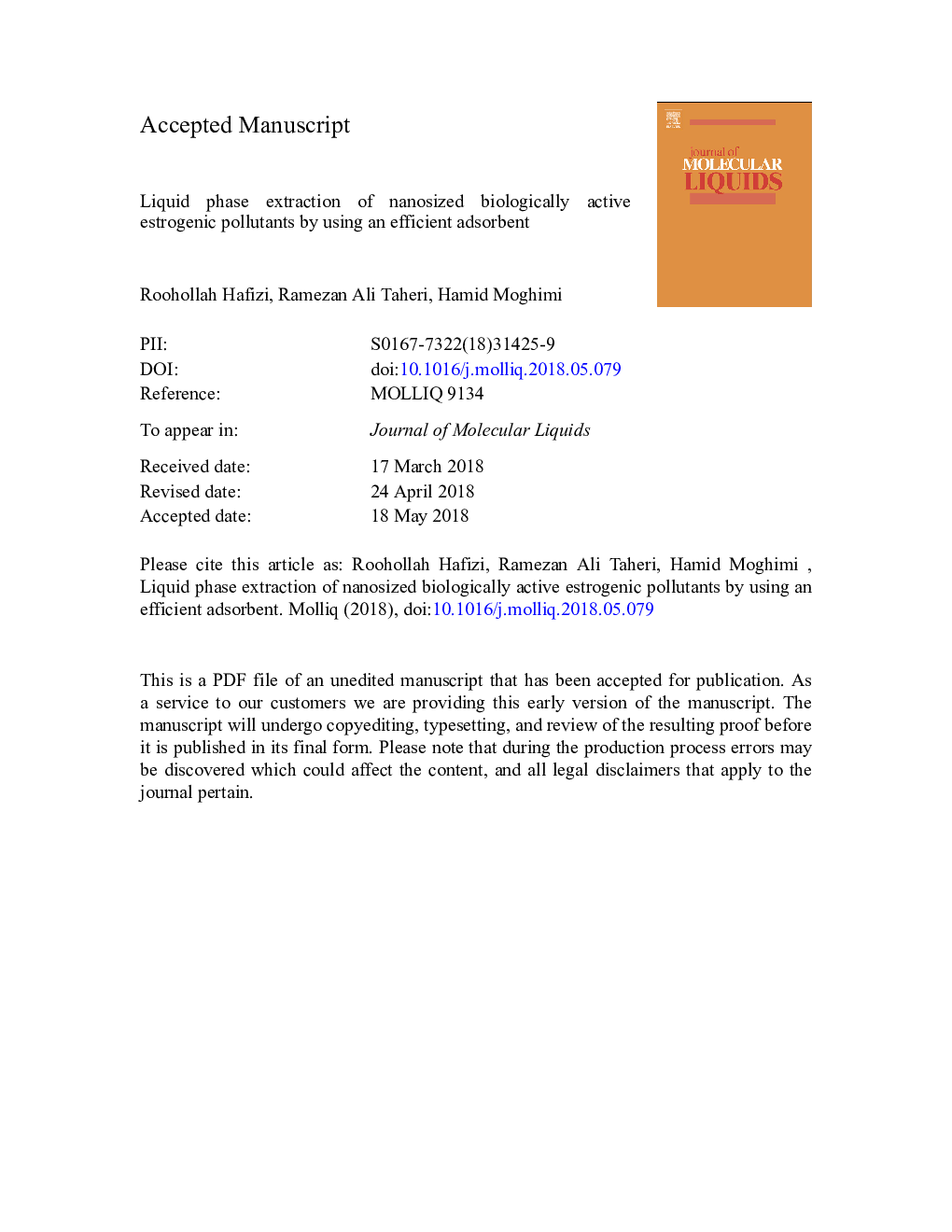| کد مقاله | کد نشریه | سال انتشار | مقاله انگلیسی | نسخه تمام متن |
|---|---|---|---|---|
| 7841903 | 1506505 | 2018 | 18 صفحه PDF | دانلود رایگان |
عنوان انگلیسی مقاله ISI
Liquid phase extraction of nanosized biologically active estrogenic pollutants by using an efficient adsorbent
ترجمه فارسی عنوان
استخراج فاز مایع از آلاینده های استروژنی فعال بیولوژیکی با استفاده از یک جاذب کارآمد
دانلود مقاله + سفارش ترجمه
دانلود مقاله ISI انگلیسی
رایگان برای ایرانیان
کلمات کلیدی
میکروپولنتن های استروژنیک، پساب آب، بیوسنسورها، شیمی محاسباتی، مدلسازی مولکولی،
موضوعات مرتبط
مهندسی و علوم پایه
شیمی
شیمی تئوریک و عملی
چکیده انگلیسی
Dangerous nanosized micropollutants and estrogenic hormones which might severely affect the environment are more found in water effluents, recently, and detection of them is of high importance. As the result, reliable and inexpensive absorptive extraction and removal applications are favored. As the second most abundant biomolecule on earth, a lignocellulosic material can be a potential choice as nanosized adsorbent. In this paper, quantum chemistry techniques are employed as the state of the art approach for predictive modeling, to investigate the feasibility of using this material in extraction and removal of eight estrogens including estradiol, estrone, testosterone, progesterone, estriol, mestranol, ethinylestradiol and diethylstilbestrol. Due to nano-scaled dimensions of these pollutants, removing them by using current commercial methods is challenging and a new approach needed to be developed. The mechanism of removing micropollutants from water affluent is based on adsorption. This fact motivated us to simulate the adsorption process, and check how well the adsorbent interact with nanosized micropollutants. In order to evaluate the affinity of lowest energy sites on structure of the lignocellulosic material toward each estrogenic hormones and micropollutants, we carried out configurational bias Monte Carlo search of the configurational space of the lignocellulosic material-estrogenic micropollutants systems according to a simulated annealing schedule. To check the response and sensitivity of the lignocellulosic material to each estrogenic micropollutants, a combination of modified Flory-Huggins model and molecular simulation techniques was used. Evaluation of detachment energy revealed the potential of the lignocellulosic material as a reusable material for removing these compounds in an aqueous media.
ناشر
Database: Elsevier - ScienceDirect (ساینس دایرکت)
Journal: Journal of Molecular Liquids - Volume 266, 15 September 2018, Pages 535-539
Journal: Journal of Molecular Liquids - Volume 266, 15 September 2018, Pages 535-539
نویسندگان
Roohollah Hafizi, Ramezan Ali Taheri, Hamid Moghimi,
